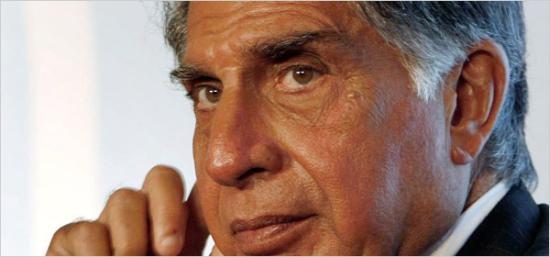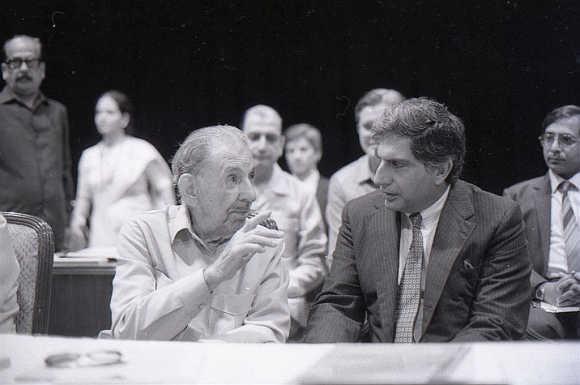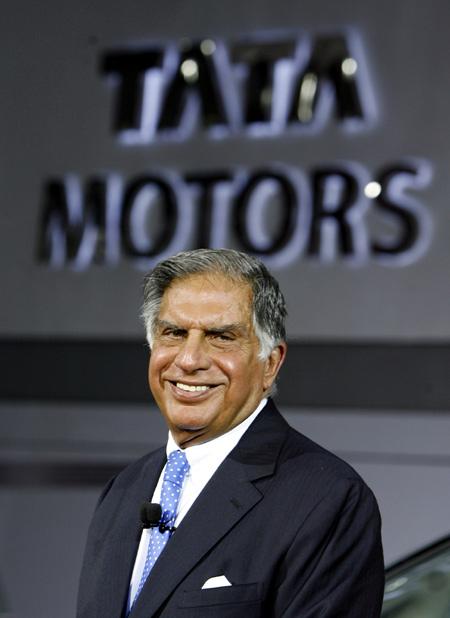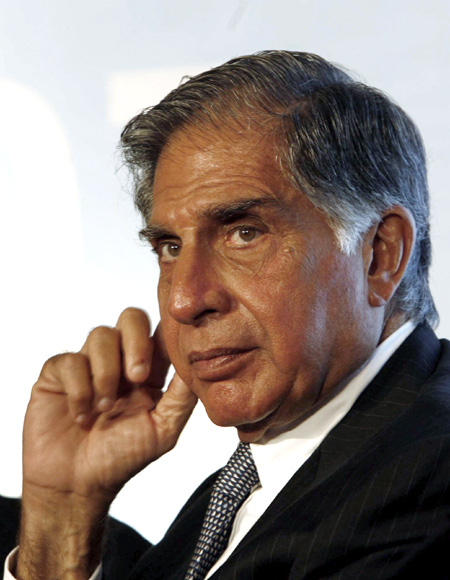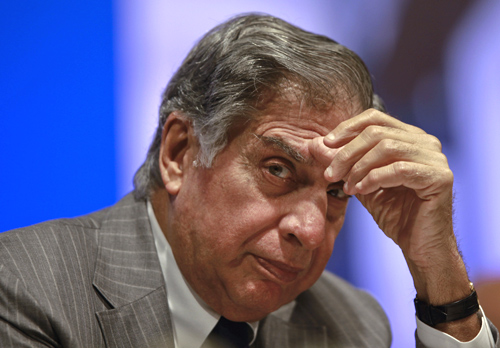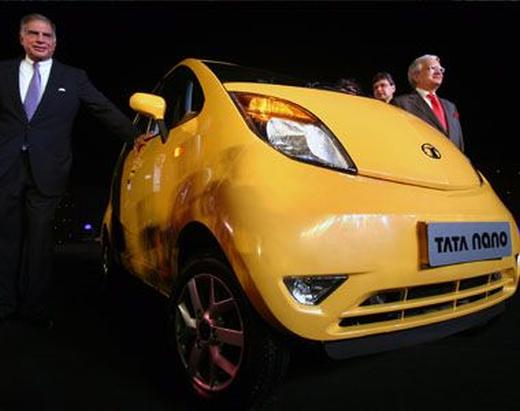 | « Back to article | Print this article |
The innovative Mr Tata
On his retirement, Ratan Tata has been hailed as the man who really grew the Tata group in terms of turnover, profit, stock market value and global footprint.
His career, you can rest assured, will soon become the subject matter of courses in business schools.
An equally vital contribution, unfortunately, has got overlooked in all the analysis number crunchers have done on his retirement: his quest for innovation.
That could be because the results aren't too numerous and visible.
Click NEXT to read further. . .
Ta-Ta, RatanThe innovative Mr Tata
But it's a transformational journey, the impact of which can be felt only in the long run.
And that alone will determine the group's success in the future.
Cyrus Mistry, Mr Tata's successor, should accord it high priority.
At a speech delivered in Mumbai on July 29, 2001, Mr Tata had said: "Without being critical, it is true that many of our companies had their heads in the sand, and were resting on past glories.
In the course of time, the view gained ground that we were less nimble than others, more resistant to change and more set in our ways.
Click NEXT to read further. . .
Ta-Ta, RatanThe innovative Mr Tata
"What we needed to do, of course, was benchmark ourselves against the best, get away from doing things the way we were, and put certain processes in place."
Not that the group had neglected innovation totally.
Rallis, for instance, had run a Freshness Index for some years -- the percentage of products in its portfolio less than three years old.
In 1995, the group had instituted the Tata Business Excellence Model.
Any company that used the Tata brand name or logo had to abide by it. But the bar needed to be raised.
Click NEXT to read further. . .
Ta-Ta, RatanThe innovative Mr Tata
In 2006, an InnoMission (Innovation Mission) of 10 Tata Group CEOs went to the United States and saw innovation at work in companies like 3M, Microsoft, Intel, Hewlett-Packard and Raytheon.
The next year, another mission was launched, this time in the other direction -- to Japanese companies like Fuji, Olympus, Toshiba, Nissan and Hitachi.
A third mission went to Cambridge to study the ecosystem for innovation there.
The result was the formation of the Tata Group Innovation Forum, a 16-member group, in 2007.
Click NEXT to read further. . .
Ta-Ta, RatanThe innovative Mr Tata
It was mandated to act as a catalyst for innovation and would meet every two months (in a different location so that local companies could participate) to take stock of the situation and remove hurdles.
The next step was to recognise and reward innovation within the group: Innovista.
These rewards were regional as well as national.
Tata would give the national awards.
There were two categories here: Promising Innovations and The Leading Edge, which was the top honour.
An independent jury would judge the entries.
Click NEXT to read further. . .
Ta-Ta, RatanThe innovative Mr Tata
There was a third category of awards in Innovista: Dare to Try.
This award was given to those ideas that did not work out.
It was meant to remove the shame of failure from trying out something new at work. There would be careful diagnosis of why the idea didn't work, and if the learning could be used in subsequent innovations.
After initial reluctance, the nominations for this category really shot up in subsequent years.
Before attempting to boost innovation within the group, it was essential to know the state of innovation in the various companies.
Click NEXT to read further. . .
Ta-Ta, RatanThe innovative Mr Tata
After much deliberation, the Tata Group Innovation Forum adopted the "Innometer" developed by Julian Birkinshaw of the London Business School (it measures the innovation process and culture on a scale of zero to five, and can be run on the whole company, a unit or even a small team).
The scores of the various group companies that have gone through the test are confidential.
A few years ago, Tata Sons executive director R Gopalakrishnan told me that about 10 companies had been put to the test.
"We are medium to upper-medium.
"We are not on top. It's a 5-point scale, and I haven't seen a 4.9 score. But I have seen scores between 3.6 and 4.3," he had said.
Click NEXT to read further. . .
Ta-Ta, RatanThe innovative Mr Tata
Another barrier to innovation was that the various Tata companies wouldn't talk to each other.
There was always scope for collaboration, but seldom was it exploited.
This is because during the days of J R D Tata, large group companies like Tata Steel, Tata Chemicals and the Indian Hotels Company were run like independent satrapies.
Mr Tata, when he became chairman in the early 1990s, eased out powerful chieftains like Russi Mody, Ajit Kerkar and Darbari Seth.
A cohesive identity was forged, but collaboration still did not happen.
So, the Tata Group Innovation Forum set up InnoClusters -- groups of companies that could work together in a certain area.
Click NEXT to read further. . .
Ta-Ta, RatanThe innovative Mr Tata
Swach, the low-cost water purifier, was born out of the collaboration between two Tata companies: Tata Chemicals and Titan Industries.
Tata Chemicals has also collaborated with other group companies like Advinus for drug delivery research, and Tata Tea for packing micronutrients in drinks.
Some of the group's innovations include its first indigenous car, the Indica in 1999, Ginger budget hotels in 2002, small truck Ace in 2005, super-computer Eka in 2005, and the world's smallest car, the Nano, in 2008.
It's not a long list, but surely the first steps of a thousand-mile journey.
Ta-Ta, Ratan